Green Apples 1914-15
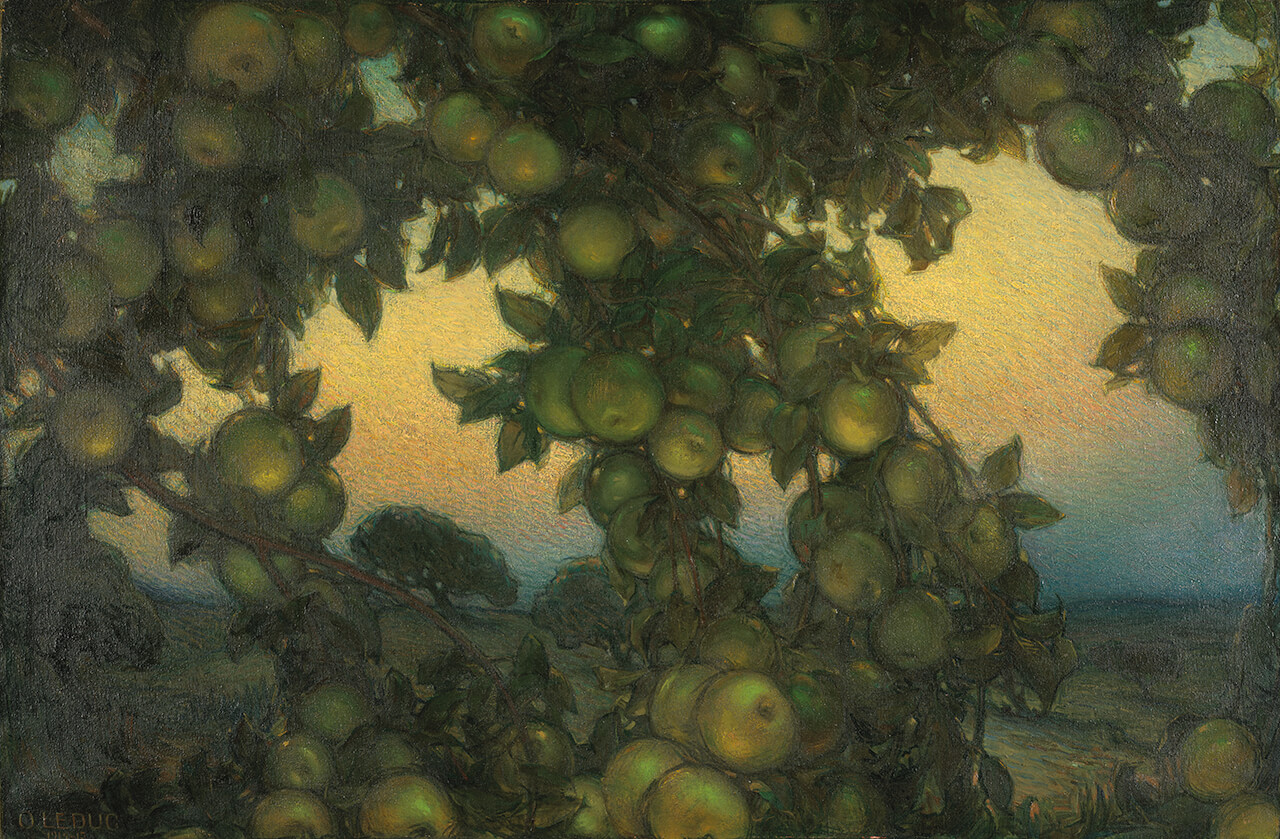
Ozias Leduc, Green Apples (Pommes vertes), 1914–15
Oil on canvas, 63.3 x 94.4 cm
National Gallery of Canada, Ottawa
Apple trees were an inevitable subject for Leduc, who was also an apple grower. Here the painter positions himself in place of the tree trunk, looking out toward the exterior through branches that form garlands heavy with unripe fruit. The glossy apples, coloured by the light of the setting sun, are built up by a mosaic of brush strokes that seem to melt the colours together. The branches frame the glowing landscape and the apples pick up tones of light from the sky, displaying a symbiosis of natural elements. These fruits promise an abundant harvest, and on this occasion Leduc celebrates the generosity of nature. Here, nature is serene.
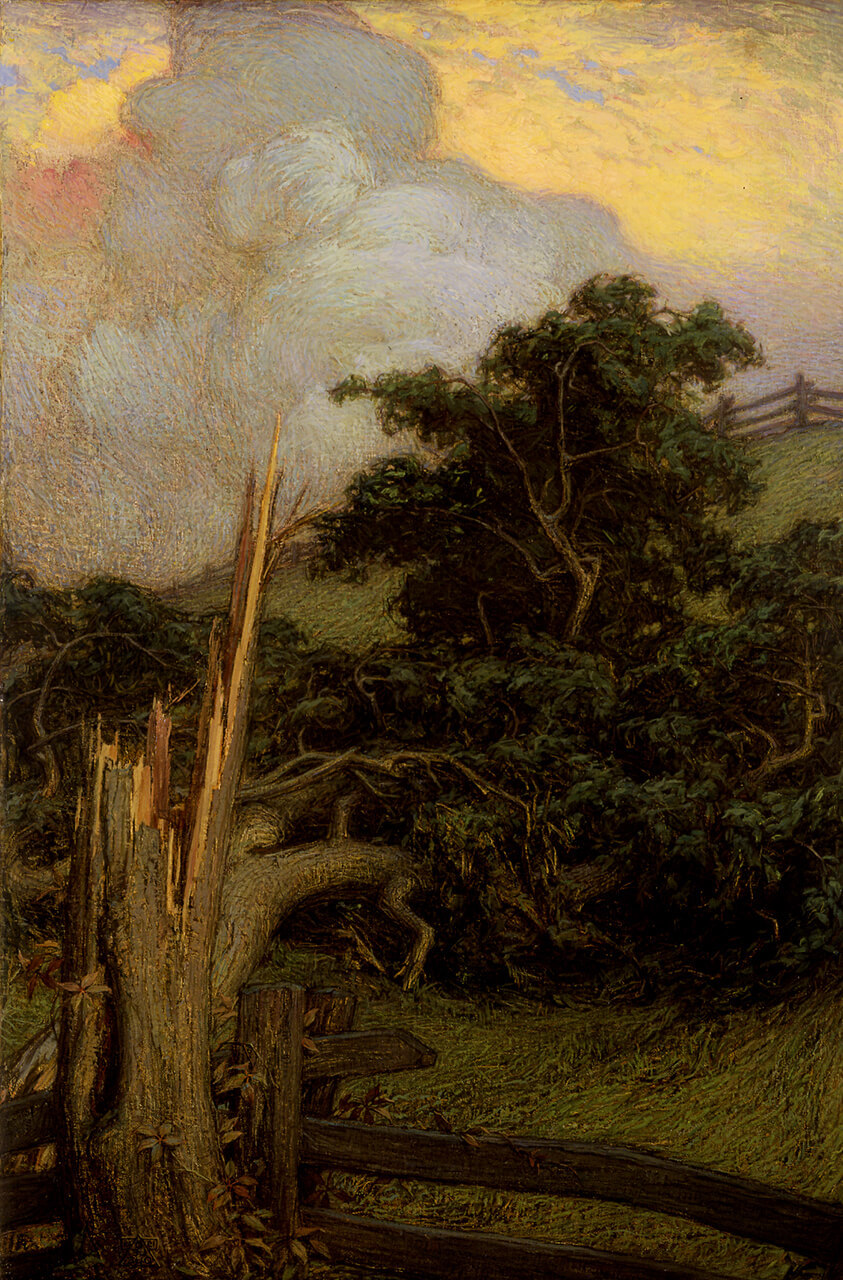
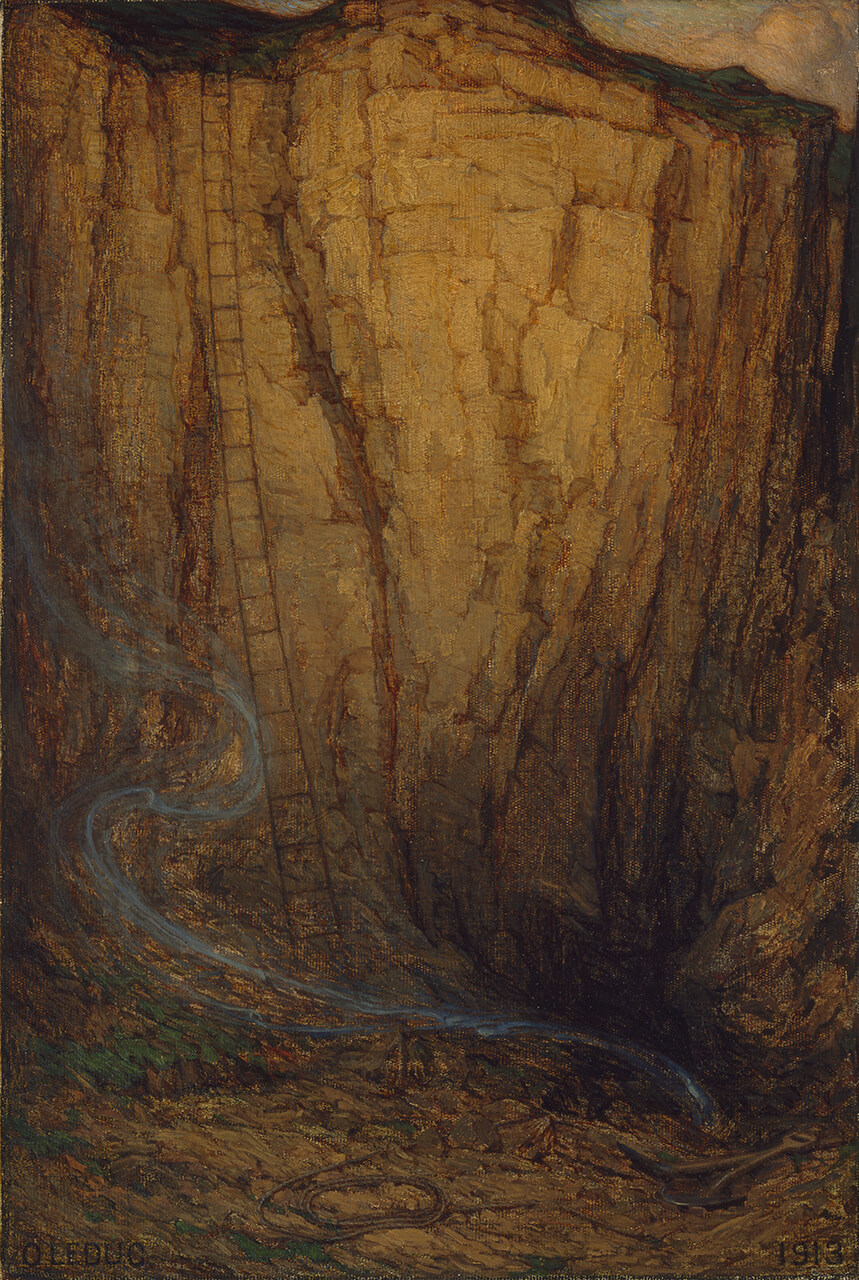
Green Apples is at the heart of a rich series of works undertaken by Leduc between 1913 and 1916: eight Symbolist landscapes, each revealing an unexpected aspect of nature. The tonalities of the seasons play a leading role, and the subjects are varied: a tree struck by lightning (Blue Cumulus [Cumulus bleu], 1913); the bottom of a quarry (Day’s End [Fin du jour], 1913); conifers in snow (Grey Effect [Snow] [Effet gris (neige)], 1914); a gigantic bridge (The Concrete Bridge [Le pont de béton], 1915); Lake Hertel in autumn (Autumn Landscape [Paysage d’automne], 1915); the steep flank of Mont Saint-Hilaire with melting snow (Gilded Snow [Neige dorée], 1916); or a craggy winter hillside (Evening Lights [Lueurs du soir], 1916).
Though the sky is sometimes bright, as in Blue Cumulus, most of the paintings are marked by the atmospheric effects of misty spaces or chiaroscuro, in which the view is clouded, as if seen though a filter that heightens some details while obscuring others. These landscapes are somewhat like Leduc’s early paintings, such as The Young Student (Le jeune élève), 1894, and Still Life with Lay Figure (Nature morte dite “au mannequin”), 1898, which are within the definition of trompe l’oeil, yet the landscapes disguise revelatory parts of their content while bringing out a few key elements—the shredded bark of a tree, an arabesque of smoke, a shade of grey or gold, channels in melting snow, or perhaps cattails piercing the snow cover—to affirm the mysterious essence of nature.
When it was exhibited at the Art Association of Montreal, Green Apples was singled out as one of the most successful paintings in the show. The National Gallery of Canada acquired it some months later when it appeared at the Canadian National Exhibition in Toronto.

 About the Author
About the Author
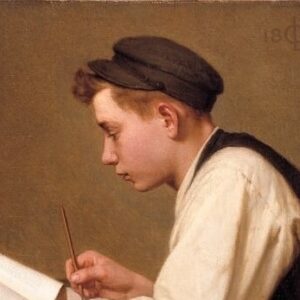 More Online Art Books
More Online Art Books
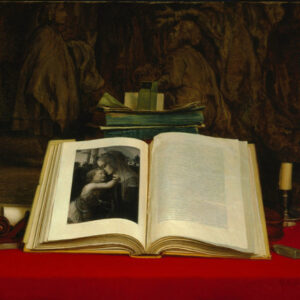 Acknowledgements
Acknowledgements